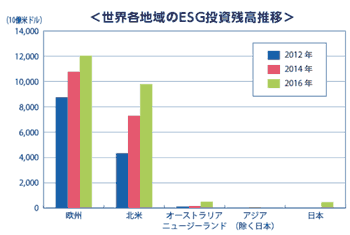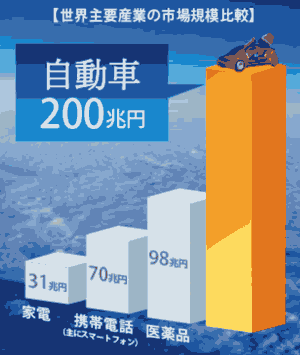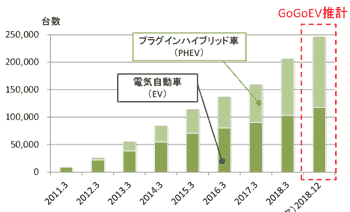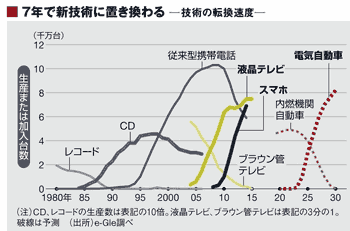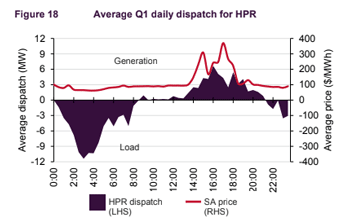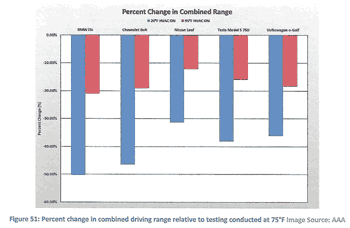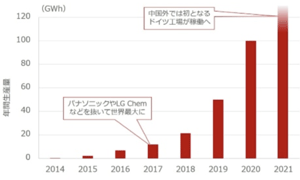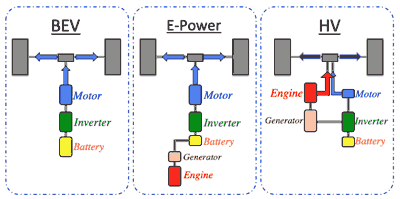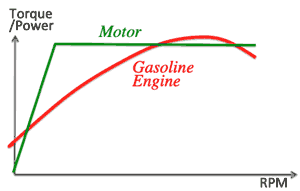>Top 2. The battle over EV:
- Expansion of EV (+PHEV) production:
- China: 777K (2017), EU 278K, US 200K, Japan 56K.
- EV vs. Gasoline car:
- China NEV Restriction: must produce NEV:
- Easy license of number plate for NEV
- Subsidy upto ¥1M for a NEV
- Priority lane for NEV
- Compulsory production share of NEV or penalty (NEV Credit, or Zero emmission Credit)
- Regulation of expanding ICE (Internal Combusion Engine) car factory, subject to efficiency of car, more ration of EV production, and more than 3% R&D; Cap & Trade System
- It is said only 吉利汽车(Geely Automotive) and 上海汽车集团(SAIC, Shanghai Automotive Industry) can clear these guidelines.
- NEV= BEV+PHEV+FCEAV
- Min. production: 10%/2019, 12%/2020, ...
- NEV minus credit: 2-5 credit/BEV, 2 credit/PHEV, -5 credit/FCEV
- Battle-2: Battery revolution:
- Tesla Factory: Freemont, CA, USA
- Tesla Gigafactory-1: Sparks, NV, USA
- Tesla Gigafactory-2: Buffalo, NY, USA
- Tesla Gigafactory-3 +Model-3/-Y Assembly: Lingang (临港), Shanghai, China
- Battery cost: 227/kWh−2016,190/2020, $100/2030 (40 kWh/¥400K)
- Asahi Kasei:
- Key car market: US, Europe, China, Japan, Australia, etc.
- Car maker:
- Audi: E-tron (90 kWh)
- Mercedes: EQC (80 kWh)
- Porsche: Taycan
- Jaguar: I-Pace (90 kWh)
- Nissan: Leaf (40/62 kWh)
- Mitsubishi: I-MiEV (Compact car) 16 kWh
- VW: e-Golf; Volkswagen I.D.
- Volvo: XC40; XC90
- GM: Chevrolet Bolt EV
- EV new challenger:
- US Tesla: Roadstar, Model-S, Model-X (75/100 kWh), Model-3, Model-Y (SUV)
- Elon Musk, CEO of Tesla aims to be a mass car producer.
- Tesla's sole plant in Fremont, CA, reached a weekly output of about 7,000 cars. (rank 145h among 70 auto plants in North America)
- 7,000 cars in one go-for-broke week; averagely 5,000 Model 3 plus alpha.
- US (China capital): Liucid, Lucid air
- US: Faraday Future, FF91 (130 kWh)
- US: Rivian, pick-up track
- US: Workforce, RIT(105/135/180 kWh)
- UK: Dyson V10
- China: NIO ES8 (half price of Tesla Model-X)
- China: Byton, M-Byte
- China: Xpeng (小鹏汽车), G3 (SUV)
- >Top Ecosystem: Charging spot vs. Gas station
- Dealer: earns by maintenance of gas engine cars
- US Challenge: (<named after Nikola Tesla, electrical engineer); basically AWD
- Tesla Model-S (Sedan); 60D, 75D, 90D, P90D, P100D
- Tesla Model-X (Croosover Utility Vehicle, XUV)
- Tesla Model-3; 50-75D?
- Tesla Roadster, 200kWh
- Battery Active Controller
- GM Chevrolet Bolt; 60kWh, 383km
- Rivian; Pick-up, AWD
- Chinese Challenge:
- NIO (蔚来汽车,Temsent), ES8; 70kWh
- Byton, M-Byte; digital rounge with 50-inch touch screen
- Xpeng (小鹏汽车, Alibaba)
- Lucid, Lucid Air
- Faraday Future, FF91
- Chinese EV Promotion Policy: NEV (New Electric Vehcles)
- Cap and Trade Policy: penalty for car maker in China: 10% in 2019, and 12% in 2020, and then 20% by 2025 (7M cars) increasing the obligatory production ration of NEV in China.; Bloomberg forecasts 2.2M EV will be sold in China.
- Subsidy by government:
- Issue of Nuber Plate:
- In Shanghai, it takes $14,000 to get the plate, but EV is free.
- >Top Software in a car:
- Google: Android Auto
- Apple: CarPlay
- Environment Policy
- Norway EV 2013/9: EV, PHV 8% share 5 years ago; increased 60% in 2018.
- 2018/3: sold BEV 37%, PHEV 19% (Total: 56%)
- Diesel engine car will be disappeard from the market by 2020, and gasoline engine by 2022.
- Toyota is dropping sales of HV nearly half from 2016.
- Canada: 8%
- Iceland: 8%
- China: 3%
- US: 2% →25%
- Unrealistic FCV (Fuel Cell Vehicle)
- concept of H2 society: neglecting new energy & battery production
- Japan: world No.1 battery developer
- Return of oil dollar to Japan
|
2. EVを巡る闘い:
- 急速充電器 (EV Quick Charger)
- Nissan's ZESP2 (Zero Emission Support Proguram-2): ¥2K/mo card
| Name |
Max Output |
AC/DC |
Location |
|
| Chademo |
50kW
(500V 125A) |
DC |
Japan, EU, US |
6,300
10,000+ (Wor) |
Mennekes
Type-2 |
22kW
(400V 32A)
43kW
400V 63A) |
AC
3P
|
EU |
43kW
for
Renault Zoe |
Mennekes
Type-2 |
70kW
(500V 140A) |
DC |
|
same pin w AC |
| Super-charger |
120kW
(400V 300A)
(360V 333A) |
DC |
US, EU, Asia |
3,519
for Tesla |
Combo-1
(Type-1) |
200kW
(1000V 200A) |
DC |
US, Aust. |
222
CCS |
Combo-2
(Type-2) |
200kW
(1000V 200A) |
DC |
EU |
1,910
CCS |
- Change of top sales of car in US (2018):
| # |
Name of car |
Sales amount |
Sales unit |
| 1 |
Tesla Model-3 |
$992.5M |
17,800 |
| 2 |
Toyota Carmry |
$765.4M |
30,141 |
| 3 |
Honda Accord |
$678.7M |
26,725 |
| 4 |
Honda Civic |
$567.2M |
27,677 |
| 5 |
Toyota Corolla |
$536.0M |
26,155 |
- 旭化成: 吉野彰、Li Battery 発明者; 1981よりR&D
- 研究ステージ: 1) 基礎研究 2) 量産開発 3) 市場開拓
- 市場: 当初Sony 8mm video battery; 1M/mo
- PC (Windows95); 500 times
- EV: 5,000 times
- EV share 15% in 2025
- Battery capacity: 500 GWh (=500 Nuclear plants)
- >Top Sales of Sedan in CA, USA, 2018:


- >Top Backcast Forecast of EV:

|

